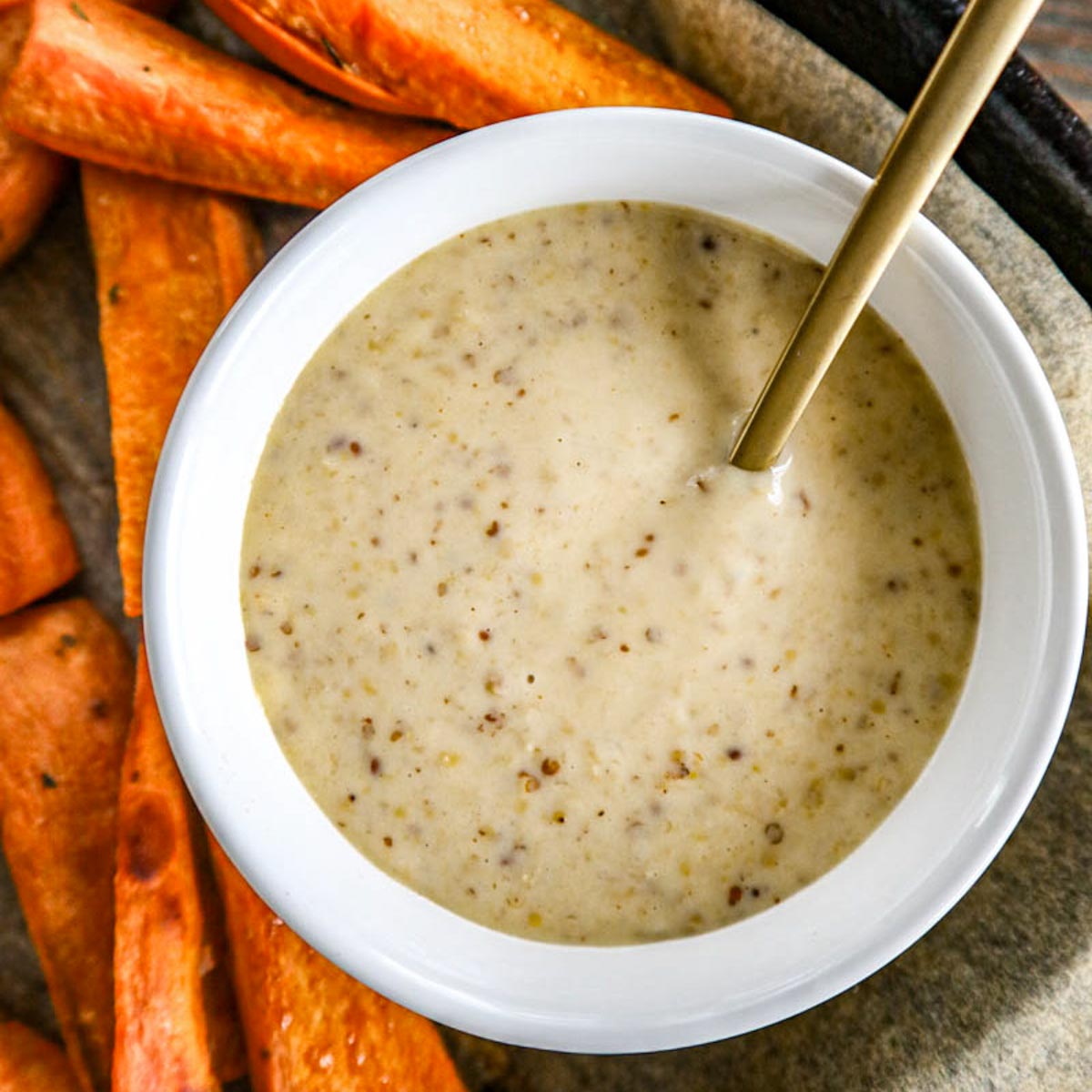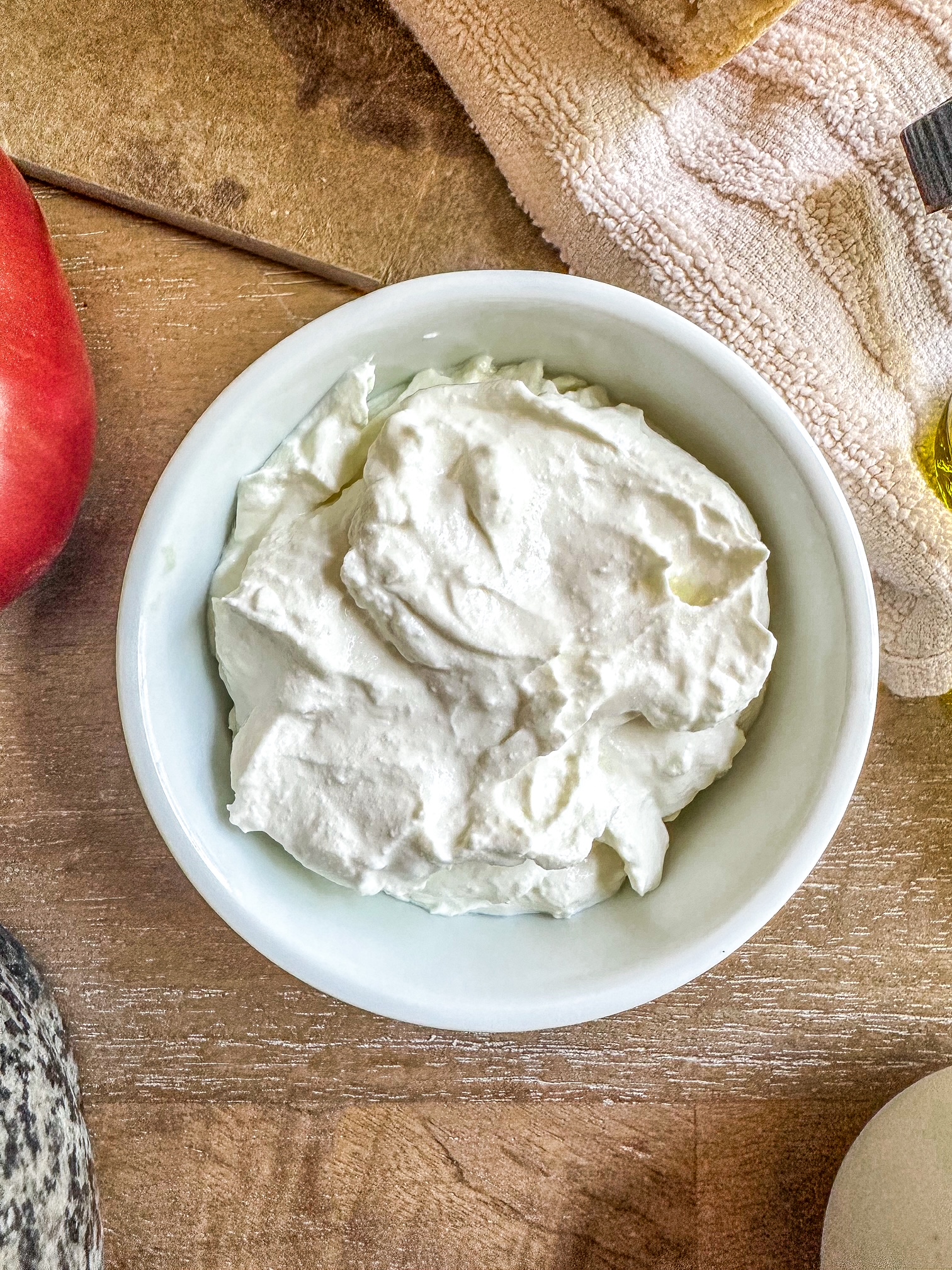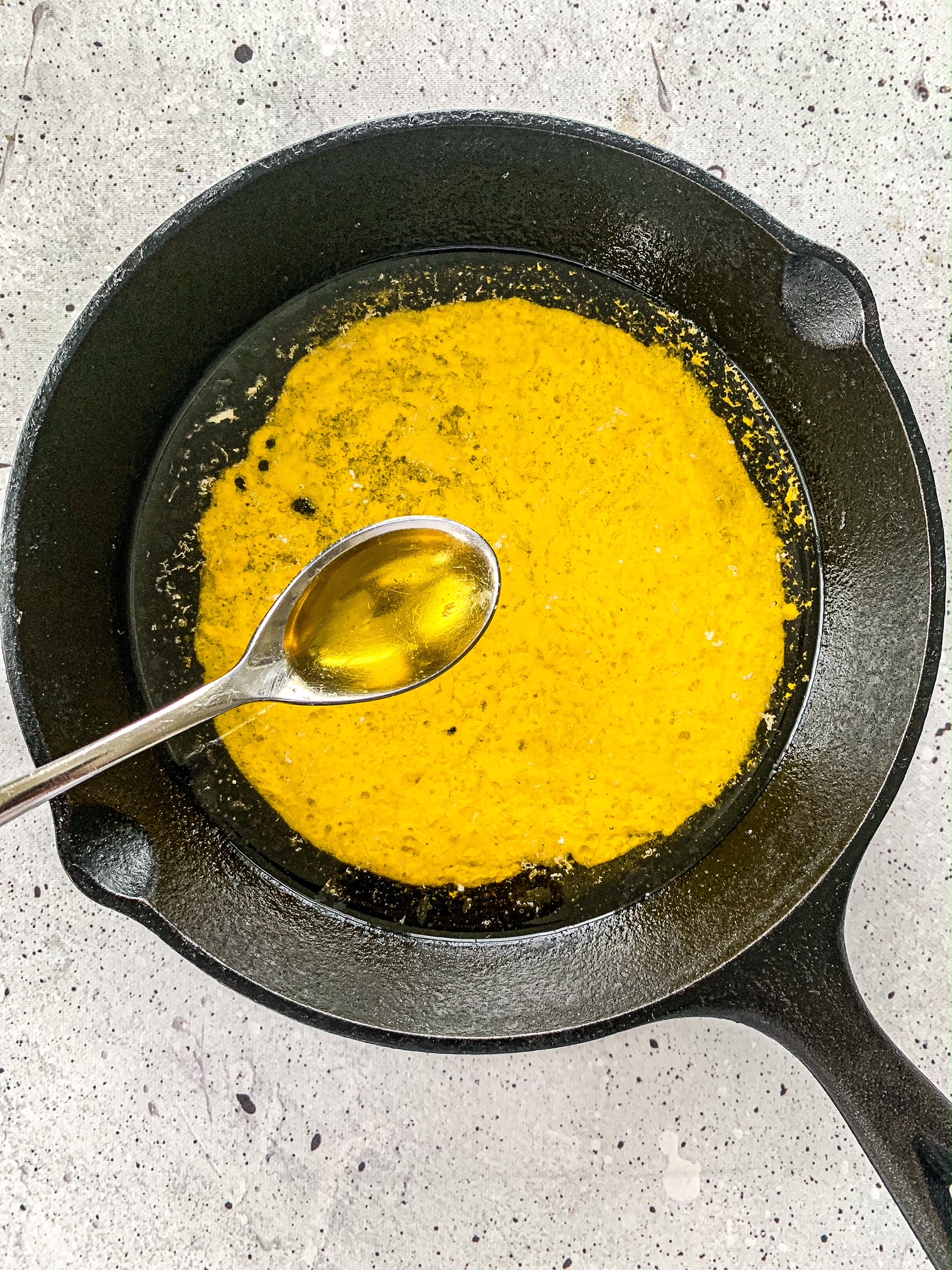This Arabic Hummus Recipe is a classic Middle Eastern dip made of chickpeas, tahini, and lemon juice. It's tangy, creamy, and incredibly easy to make. It's perfect for healthy snacking, gatherings, or smearing onto absolutely everything. This at-home recipe is super simple and you won't want to go back to store-bought hummus again.

Growing up, my mom made hummus almost every day. It's something we always had on hand, and it's one of the first recipes I ever learned how to make! This recipe has been in our family for decades, and I'm so excited to share it with you!
If you are looking for more Middle Eastern dishes check out my Turkish Labneh or my Turkish Potato Salad.
Jump to:
Why you'll love this recipe
- Incredibly Creamy Texture: By using dried chickpeas, removing the skins, and blending with cold water, this authentic hummus recipe produces the creamiest, smoothest hummus possible.
- Simple Ingredients: Traditional hummus is made with only a handful of ingredients that you probably already have in your pantry. High quality, natural ingredients blows pre-made preservative-filled grocery store hummus out of the water.
- Customizable: This recipe provides the perfect creamy base to get creative with toppings and mix-ins like roasted red peppers, pine nuts, olives, herbs and more to suit your tastes.
What is hummus?
Hummus is a Middle Eastern spread or dip made by blending chickpeas, tahini, fresh lemon juice, and garlic. Hummus is traditionally served as a side dish or as an addition to a Mezze platter topped with olive oil and spices, and then scooped up with pita or veggies. You can also use it on sandwiches, in nourishing bowls or enjoy it as a healthy snack.
While there are countless variations, authentic Arabic hummus has a distinctly rich, almost buttery taste from the chickpeas and tahini. It's meant to be ultra-smooth and creamy, not dry or gritty like you find in most grocery stores.
Ingredients
- Garbanzo beans (Chickpeas): My mom would use dry chickpeas, however for ease and convenience, I prefer to use the canned variety, although either will do. One of the keys to creamy hummus is uber-soft chickpeas. In order to soften the chickpeas a bit more once they're un-canned, simply boil them with some baking soda to help raise the PH which will help them soften up nicely.
- Tahini: Is made from ground sesame seeds and is what adds a distinct richness to your hummus. If possible, I recommend purchasing a good quality organic tahini made from only sesame seeds.
- Lemon Zest and Juice: If you like your hummus tangy, don't skimp on the lemon juice! As with most things, freshly squeezed lemon juice is the best option.
- Garlic: Garlic is key in hummus, however, raw garlic can be a bit much for some. Soaking raw garlic in lemon juice will help tame the garlic and mellow the sometimes harsh taste, while still providing a ton of flavor.
- Ice Water: This will help make the hummus nice and smooth. You can also use a couple of ice cubes if you like.
- Sea Salt: Start with just a pinch or two and add more as needed. I tend to add less salt when blending, as I like to 'finish' the hummus with a flakey sea salt for added pizzaz! Maldon’s Sea Salt is wonderful and affordable.
- Extra Virgin Olive Oil: Any Extra Virgin Olive Oil will work, however since this recipe calls for Olive Oil to finish the dish, a good quality olive oil is recommended. I was gifted some amazing finishing oil from the Middle East to top dishes like this it adds a wonderful layer of depth and flavor. The extra virgin olive oil also contains healthy fats.
- Additional Spices: If you enjoy a touch of heat you can top hummus with Cayenne pepper, however other great ways to finish the hummus are with herbs and spices such as sumac, cumin, and flakey sea salt.
See the recipe card for quantities.
Instructions
This is an overview with step-by-step photos. Full ingredients & instructions are in the recipe card below.

Step 1. Drain and rinse the canned chickpeas and add them to a saucepan along with the baking soda. Fill the saucepan with enough water to cover the beans, and bring to a low boil. Cook for 20 minutes or until the chickpea skins are falling off and the beans are mushy. When done, drain the cooked chickpeas and set them aside for them to cool.
Step 2. Add lemon juice and chopped garlic to the food processor and pulse until garlic is minced. If you want to mellow out the garlic, set aside for 5-10 minutes, otherwise move right along to the next step.

Step 3. Add tahini and 2 tablespoon ice water to food processor and blend until it has a smooth texture. Reserve the other 2 tablespoon ice water to use later if the hummus needs to be thinned out.
Step 4. Add drained garbanzo beans, lemon zest, and sea salt to the food processor and blend until creamy. If your hummus is a bit chunky, while the food processor is running, add 1 tablespoon of ice water at a time until you achieve the desired texture. Be sure to also scrape down the sides of the food processor and blend again if needed.

Step 5. Scoop the silky hummus onto a serving platter and top with garnishes of your choice.
Substitutions and variations
- No Garlic: If you are not a fan of garlic you can leave the garlic cloves out of this recipe.
- Flavored: You can try making popular variations of the classic, such as beet hummus, or add in a couple of roasted red peppers for a red pepper variation.
- Spicy Hummus: Add in a ¼ teaspoon cayenne pepper to make a spicy variation.
- Mixed Beans: For a fun variation on this creamy dip you can try using half can of garbanzo beans and half a can of cannellini beans.
Serving
You can serve this smooth hummus like a dip, or on a mezze platter. Just scoop hummus onto a serving bowl or plate, create a well with the back of a spoon, and drizzle olive oil and your favorite toppings. Some of my favorite foods to pair with hummus are:
- Pita Bread
- Pita Chips
- Fresh Veggies
- Carrot Sticks
- Sourdough Bread
- Red Peppers
- Chicken Kabobs
- Kefta
- Falaffal
Toppings:
- Olive Oil
- Sumac
- Cayenne Pepper
- Parsley
- Toasted pine nuts
- Flakey Sea Salt
Storage
This creamy hummus can be stored in an airtight container in the fridge for seven to ten days. For maximum freshness pour a little olive oil over the top. You can also store hummus in the freezer for up to six months. For best results bring it up to room temperature before serving.
FAQ's
While a food processor makes hummus-making a breeze, you can still achieve the right consistency with a blender or even immersion blender and some elbow grease. Just blend longer until perfectly creamy.
Keep adding splashes of ice water while blending until you reach that silky, spoonable consistency.
I would not recommend substituting tahni in this recipe as it is an essential part of this authentic hummus recipe. If you must substitute it, you can use some olive oil, but the taste will not be the same.
You make also like

Simple and Creamy Hummus
Equipment
- Sauce Pan
- Food Processor
Ingredients
- 1 can Garbanzo Beans Organic, no salt added
- ½ teaspoon Baking Soda
- 1 Zest of Lemon
- ½ cup Lemon Juice or more to taste
- 1 clove Garlic, roughly chopped
- ⅓ cup Tahini
- 4 tbps Ice Water
- ¾ teaspoon Cumin
- ½ teaspoon Sea Salt, divided
Instructions
- Drain and rinse garbanzo beans and add to a saucepan along with the baking soda. Fill saucepan with enough water to cover the beans, and bring to a low boil. Cook for 20 minutes or until the garbanzo beans are mushy. When done, drain garbanzo beans and set aside for them to cool.
- In the meantime, zest 1 lemon and set aside.
- Add lemon juice and chopped garlic to the food processor and pulse until garlic is minced. If you want to mellow out the garlic, set aside for 5-10 minutes, otherwise move right along to the next step.
- Add tahini and 2 tablespoon ice water to food processor and blend until creamy. Reserve the other 2 tablespoon ice water to use later if the hummus needs to be thinned out.
- Add drained garbanzo beans, lemon zest, cumin and sea salt to the food processor and blend until creamy. If your hummus is a bit chunky, while the food processor is running, add 1 tablespoon of ice water at a time until you achive the desired texture. Be sure to also scrape down the sides of the food processor and blend again if needed.
- Taste and adjust flavor as needed. If you like it super tangy, add a bit more lemon juice.
- Scoop hummus onto serving platter and top with garnishes of your choice.
Notes
- Hummus is usually served at room temperature, but can also be eaten chilled.
- You can keep the hummus in the fridge in an airtight container for 7-10 days.
- Sumac
- Cumin
- Cayenne
- Flakey Sea Salt
- Parsley









Leave a Reply